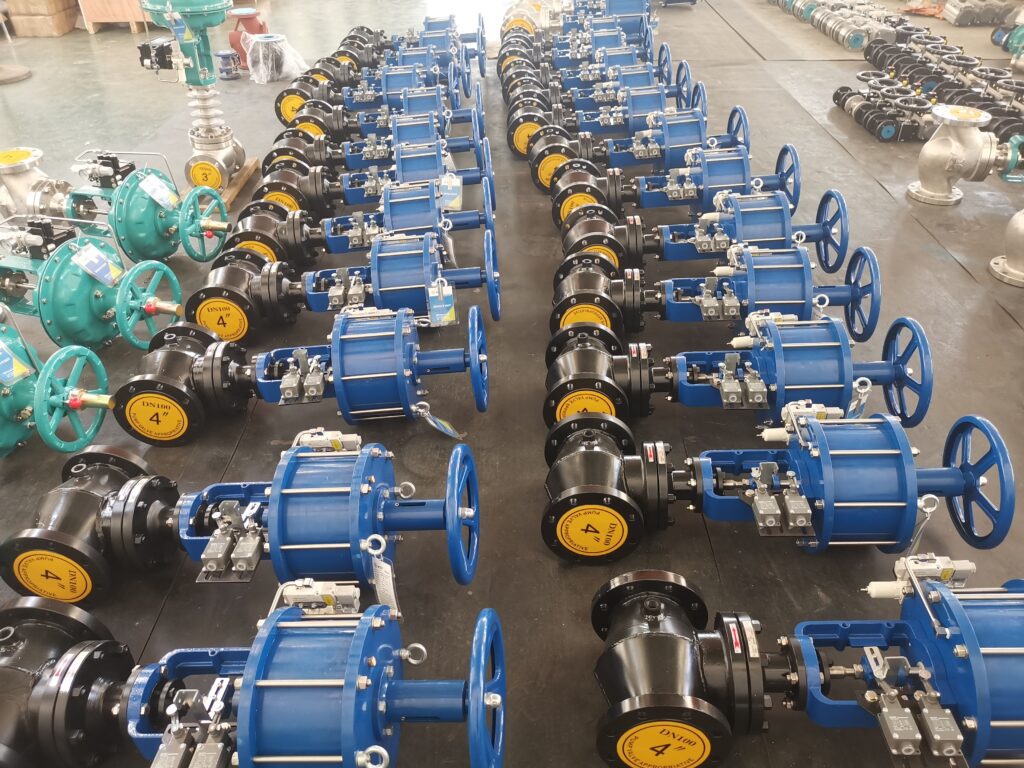
Metal mining operations must be practical and controlled because these factors help to maximize output, cut costs, and maintain safety. To accomplish these goals, many processes must be precisely controlled. This blog examines how pneumatic control valves are essential for improving control and efficiency in metal mining operations. These valves are crucial parts of mining systems that control the flow of gases and liquids. Its ability to accurately manage variables like pressure, flow rate, and temperature enables operators to perform better and achieve better operational results. Join us as we explore the subject and learn how pneumatic control valves have significantly improved efficiency and control in the metal mining sector.
Understanding Pneumatic Control Valves
In many industries, including manufacturing, oil and gas, chemical processing, and many more, pneumatic control valves are crucial. These valves are essential for controlling the flow of gases or liquids and provide precise control over pressure, flow rate, and other process variables.
Pneumatic control valves work on the fundamental premise that the valve mechanism is activated by compressed air or gas. A moveable component, such as a disc or plug that may open or close the flow path, makes up the valve. The actuator manages the moveable element’s position and is powered by compressed air or gas.
The actuator modifies the position of the moveable part in response to a signal, often from a controller or an automated system. This motion controls how much gas or liquid passes through the valve. The actuator can be operated manually or automatically depending on the application’s needs.
Positioners, devices that precisely position the valve based on the input signal, are frequently used in pneumatic control valves. Positioners guarantee precise valve control, enabling accurate and reliable management of the process parameters.
Components, including air compressors, pressure regulators, filters, and control valves, are part of the pneumatic control system. The system is supplied with compressed air or gas, and the pressure is adjusted to the desired value. The controlled air or gas is delivered to the control valve, transforming it into mechanical motion to modify the flow rate.
Applications of Pneumatic Control Valves in Metal Mining
Pneumatic control valves find extensive application in various areas of metal mining operations, contributing to efficient and controlled processes. Here are some specific areas in metal mining where pneumatic control valves are commonly used:
§ Ore Processing: When processing ore, where several stages of crushing, grinding, and separation occur, pneumatic control valves are essential. These valves are used to precisely manage the concentration, pH levels, and other crucial factors as ore, water, and chemical reagents flow throughout the process.
§ Material Transportation: In metal mining operations, adequate material transportation is crucial. In pneumatic conveying systems, control valves manage the flow of crushed or powdered ores, concentrates, or other materials. These valves optimize the transportation process by allowing operators to regulate the speed and direction of material flow.
§ Slurry and Tailings Management: In managing slurry and tailings in metal mining, pneumatic control valves are essential. Tailings pipelines handle the transportation of waste materials, while slurry pipelines move finely powdered ore combined with water. Slurry and tailings are transferred smoothly and under control thanks to pneumatic control valves that control the flow and pressure in these pipelines.
§ Water and Effluent Treatment: Water is needed in metal mining operations for various tasks, such as ore processing and dust control. To manage the flow and pressure of water in water treatment systems and ensure effective treatment procedures, pneumatic control valves are used. Additionally, these valves help preserve environmental rules by regulating the outflow of treated effluents.
§ Dust Control Systems: For metal mining operations to reduce risks to health and safety and meet environmental regulations, dust management is a crucial component. To effectively manage airborne dust particles, pneumatic control valves are employed in dust suppression systems to regulate water flow or chemical agents.
§ Process Heating and Cooling: Processes in metal mining operations frequently need precise heating or cooling. Heat exchangers, furnaces, and other equipment use pneumatic control valves to regulate the flow of steam, air, or other heat transfer fluids. By allowing operators to maintain ideal temperatures, processes are more effective, and the quality of the final product is improved.
Pneumatic control valves help increase efficiency, precisely control essential variables, and improve operational results in each field. Thanks to their adaptability and dependability, they are crucial parts of metal mining operations, which provide a steady and controlled flow of materials and fluids throughout the processes.
Advantages of Pneumatic Control Valves in Metal Mining
§ Precise control
§ Efficient operation
§ Quick response
§ Wide range of control
§ Versatility
§ Reliability
§ Safety
§ Easy maintenance
§ Cost-effective
§ Compatibility with automation systems

Selection and Installation Considerations
Installing and integrating pneumatic control valves in metal mining systems requires careful consideration and adherence to best practices.
§ System Evaluation: Evaluate the mining system thoroughly to determine the precise control settings and requirements. Consider variables like pressure, flow rate, temperature, and the kind of fluid or gas that must be managed.
§ Valve Selection: The functional characteristics of the application, including pressure rating, temperature range, and compatibility with the fluid or gas, should be considered when choosing pneumatic control valves. Consider valve size, type (such as ball, butterfly, or globe valves), and actuation method (like piston or diaphragm).
§ Positioning and Accessibility: Install valves in areas that are simple to reach for maintenance and troubleshooting. Consider the valve’s accessibility, operating space requirements, and proximity to adjacent parts or machinery.
§ Piping Design: Pay close attention to the piping design to ensure appropriate sizing, arrangement, and material. To reduce pressure on the valves and guarantee proper alignment, adequate pipe supports should be offered.
§ Actuator Selection: Select the appropriate actuators based on the system conditions and control requirements. Consider elements like actuation speed, air supply pressure, and environmental factors (such as humidity and temperature).
§ Instrumentation and Control System Integration: Ensure the overall instrumentation and control system are correctly integrated with the pneumatic control valves. Work with process engineers and automation experts to build efficient communication and control techniques.
§ Calibration and Testing: Test and calibrate the pneumatic control valves to ensure their correctness and performance before commissioning. To guarantee correct operation and response, perform functional testing.
§ Regular Maintenance: Put a detailed maintenance schedule for the pneumatic control valves in place. To ensure optimum performance and avoid unanticipated breakdowns, schedule routine inspections, cleanings, and lubrication.
§ Training and Documentation: Give operators and maintenance staff instructions on using, maintaining, and troubleshooting pneumatic control valves. Keep records of all documents, such as valve specs, installation, and maintenance information.
§ Compliance and Safety: Ensure adherence to all applicable industry norms and laws, including those governing environmental protection and safety procedures. Use safety precautions like valve lockouts and tag-outs to stop illegal or unintentional activation.
The installation and integration of pneumatic control valves in metal mining systems can be done efficiently by adhering to certain best practices, assuring optimum performance, dependability, and safety throughout the operation.






